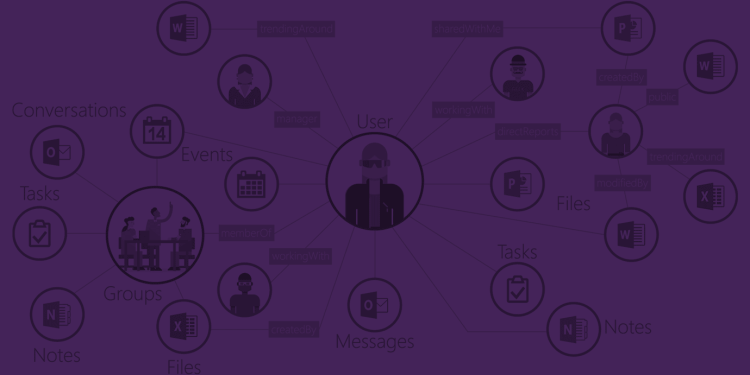In addition to all the Visual Studio news announced at its Connect(); 2015 event, Microsoft today also launched Microsoft Graph, which gives applications access to digital work and digital life data across the Microsoft cloud. Put another way, developers can now leverage data, intelligence, and APIs with a single authorization token.
If this sounds familiar, that’s because Microsoft has long been talking about an “office graph” that helps developers reach 1.2 billion Office users. Indeed, at its Build 2015 developer conference in April, the company previewed a unified API end point for data in Office apps (known as the Office 365 Unified API).
Today’s launch allows any developer capable of making an HTTP request to call the API from any platform. More specifically, here is what is available via Microsoft Graph:
- General availability (ready for production) — Users, Files, Messages, Groups, Events, Contacts (personal), Mail, Calendar, Devices, and other directory objects. Groups, 0-60 experience and docs.
- Preview (available to explore) – Notification, SDKs, Commercial: People, Organizational contacts, Office Graph, Planner, OneNote, Excel REST. Consumer: Converged Auth. flow support, OneDrive Files, WL profile, Outlook
Developer access to get started is free. Access to customer data is included in the Office 365 license, which spans all the APIs that Microsoft has released this week. That said, as the company adds more intelligence components to Microsoft Graph, it will decide which are included in the Office 365 license and which it will charge for separately.
Microsoft hopes this will result in people-centric apps that help companies and users “achieve more with contextual insights.” Microsoft Graph was built by the Office Extensibility and Azure Active Directory teams. It therefore should come as no surprise that it lets developers work across Office 365 services and Azure AD.
In fact, Microsoft is going as far as to promise a lot less work for developers. “What used to be 50+ lines of code is now cut down to 5,” Microsoft said.
At the same time, the company is releasing SDKs, starting with .NET, iOS, and Android and then expanding to other platforms like Node.js, Python, Java, Ruby, and so on. Code samples for a variety of platforms are available on GitHub.
The Microsoft Graph also gives developers access to rich Office 365 data. Microsoft pointed out that it has more than 18 million consumer Office 365 subscribers, 60 million commercial Office 365 monthly active users, more than 500 million people managing their documents and photos in OneDrive, and over 200 million downloads of Office mobile apps.
The Microsoft Graph can also be used to address critical work and productivity questions, such as: “Who does the user work closely with?,” “What documents and topics are important to my colleagues right now?,” and “What matters the most to my boss?”
That last one is probably a bit of a stretch, but that’s at least the pitch Microsoft gave its partners. Do.com, Skyhigh Networks, Smartsheet, OfficeAtWork, TechnologyOne, and CloudLock have already started using the Microsoft Graph to compete in their respective industries.
If you’re a developer, check out the Office Dev center and the Getting Started section.


